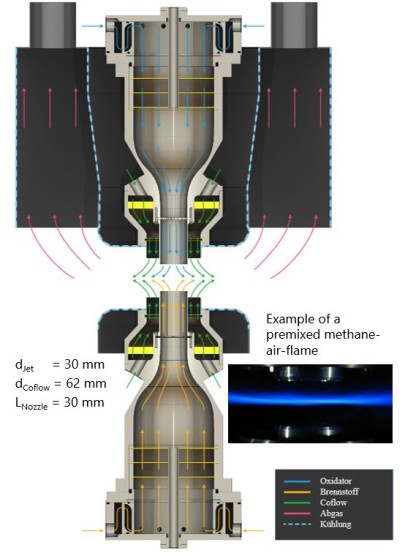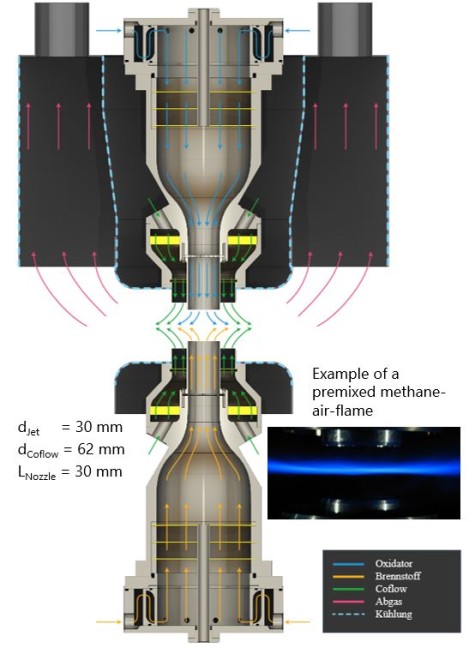M.Sc. Steffen Walther
Working area(s)
Contact
walther@rsm.tu-...
work +49 6151 16-28928
Work
L6|01 105
Otto-Berndt-Str. 3
64287
Darmstadt
With a few exceptions, only petroleum-based fuels are currently on the market. Classic biofuels such as bioethanol or biodiesel only provide as additives for gasoline and diesel fuel. Also gaseous fuels (CNG, LNG, LPG) are used only for a small extent. To improve the energy efficiency by reducing the greenhouse gas pollution and soot emission, which is a highly discussed topic, alternative fuels (e.g. E-Fuels) become an increasing attention. One of those alternative liquid fuels is oxymethyleneether (OME), which has considered as one of the most promising renewable clean fuels in combustion. In relation to energy performance, combustion and exhaust characteristics, fundamental investigations in soot emission and oxidation in flames on closer inspection of boundary conditions like equivalence ratio, exhaust-gas return, laminar and turbulence flow fields are necessary. But not only pure OME is used to investigate these fundamentals of flame characterization, OME blends and OME mixtures with a diesel surrogate to reduce the soot emission has to be examine as well.
To achieve a more detailed and fundamental understanding of an OME flame, the research focuses on measurements in soot emission and flame characterization. Particular soot particle sizing, volume fraction and specific soot properties including the characterisation and validation of the complex flow conditions have to be examined. To investigate such OME flames in laminar cases, a counter flow burner and for turbulent flow conditions a jet burner will be used. These flame and flow characteristics are observed by optical measurement techniques such as particle image velocimetry (PIV), particle tracking velocimetry (PTV), planar laser induced fluorescence (PLIF) particularly OH- and PAH-LIF as well as laser induced incandescence (LII).






